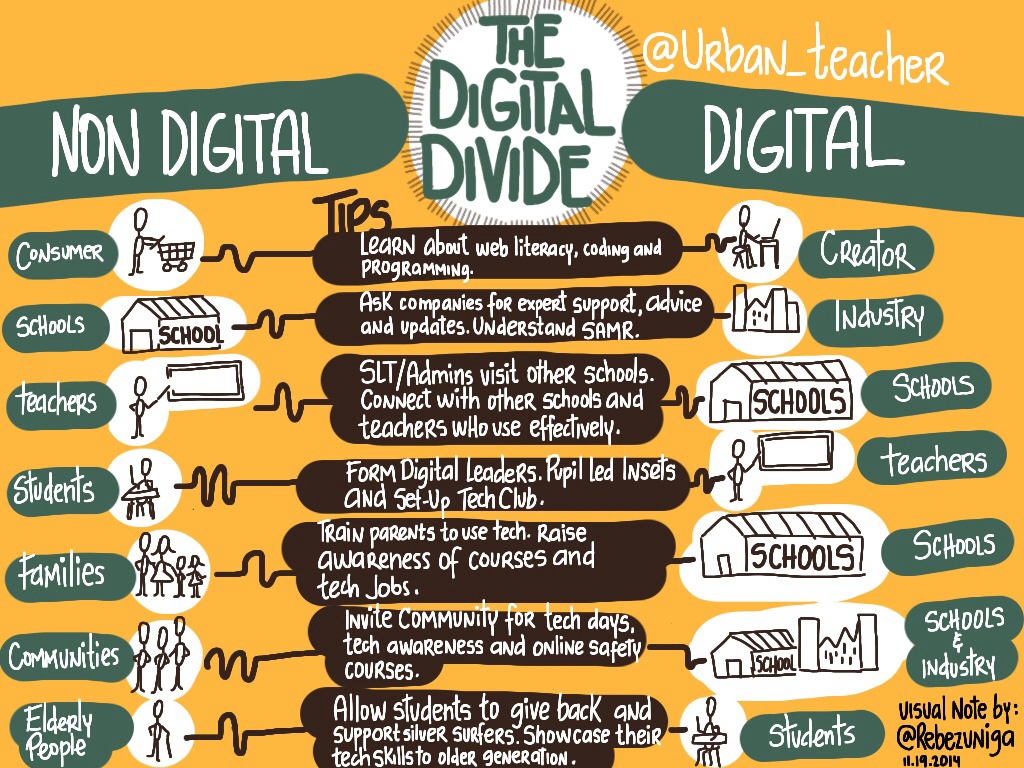OTAN News
Diving Deeper into the Digital Divide
 "Some solutions for solving the digital divide with schools, parents & community"
"Some solutions for solving the digital divide with schools, parents & community"
by rebe_zuniga is licensed under CC BY 2.0
For all of us in adult education, working online with our students and colleagues over the past year has been challenging in so many ways. While a few agencies had plans in place to teach and work online and some even offered online courses as a part of their programs at the start of 2020, most adult education agencies had to quickly scramble to move their in-person operations into the virtual world to continue working and serving students and their constituents once the world began living in the time of COVID.
One of the lessons learned from this past year is a much better understanding of the digital divide that exists in our state and in the US and limits or prevents people from participating in our increasingly digital world. The digital divide is multi-faceted, but what we’ve seen in our situations that affect students and others are the lack of an Internet connection or a robust connection at home, the lack of devices in the household, and students with not enough digital skills and abilities to be able to effectively study and work remotely. Although adult education agencies have done a lot of work to get devices into the hands of students and help them improve their digital skills over the past year, there is still more to do.
Research is starting to dive even deeper into learning why and how people are still not connected, even after efforts and resources to do so have been put in place. A new report from the Boston Consulting Group in partnership with Comcast uncovers some of these reasons. They find there are four factors that hinder enrollment in sponsored-service programs and limit internet adoption: low program awareness, a lack of clarity about the offerings and processes, a lack of trust in the available services, and structural limitations, physical impediments that prevent or deter a household from enrolling in a sponsored-service program. You can learn more about the BCG report by reading this article, Boosting Broadband Adoption and Remote K–12 Education in Low-Income Households.
For more information on why students are still not connected, we also recommend the article Some kids never logged on to remote school. Now what? and a recent webinar from the National Digital Inclusion Alliance Why People Say No to “Free Internet” and What To Do About It. Hopefully, by better understanding why people are still not digitally connected to our programs and agencies, we can figure out what actions we can take to better serve these potential students and stakeholders.

